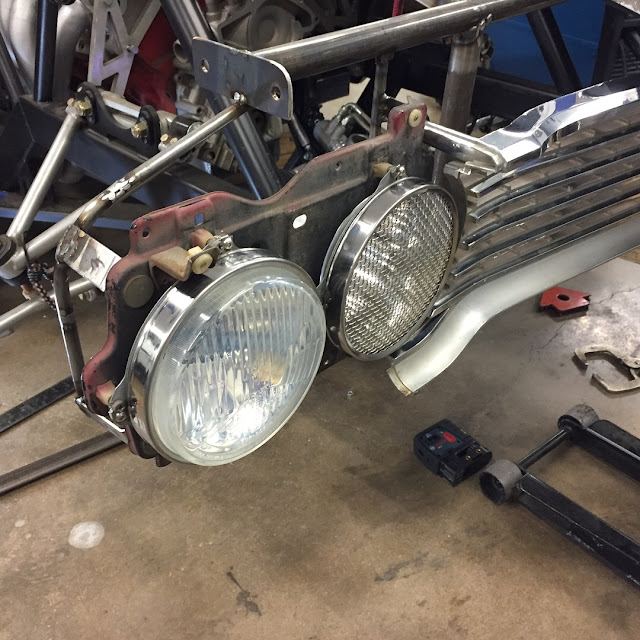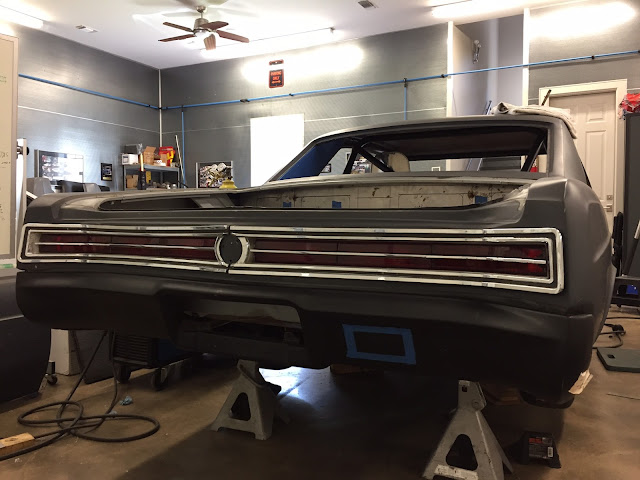I wanted the fenders to be easily removable, with out tools. I like to be able to sit on the front tires, and service the engine without bending over too much.
Stainless steel quick release pins will do the job in place of the factory bolts. They go right where the bolts used to be. The tricky part is getting the pins something to anchor into other than the fiberglass. Tether lines will keep the pins from getting lost.I made backing plates from 1/4" 6061 Aluminum. These will spread the load over a larger area behind the fiberglass. The plates have stainless steel receptacles for the quick release pins.
More 3M panel bond secures the backing plates to the back side of the fiberglass fenders.
Here I have a pin and a nut/bolt securing the plates until the epoxy dries.
The rear of the fender is secured down low by small button activated fasteners from Quik-Latch. Since this is a blind condition, Chris Brown made me some threaded mounting plates for the ball studs that I can adjust in and out.Quik-Latch offers buttons in different colors, so this red should be barely noticeable.
The rear of the fender also uses at Quik-Latch fastener at the top.
The factory mounting tab to the left doesn't have anything to attach to on the chassis with all of the factory firewall sheet metal being removed due to the engine setback.
I used 3/8" diameter DOM steel tubing to build "outlookers" to mount the factory head light buckets. I had some 3" square tube fence posts laying around that I made mounting tabs from.It took 5 pieces of 3/8" tubing to make each side. I chose 3/8" because that is the largest size my Woodward Fab 3 in 1 break/roller/shear would roll.
Here the factory head light buckets are mounted to the outriggers. The current plan is for the inner head lights to be engine air induction. I've always though this looked mean.
The grill is reinforced in the center with 5/8" diameter DOM steel tubing.
The high beam hole in the factory head light bucket had to be enlarged to make room for the air inlet. The remaining headlight is a CIBIE with a flat front. The outer part of the grill is supported from the same two mounting points as the inside of the headlight bucket.
Looks pretty mean, especially with the 315 front tires trying to peek around.
The bumper is flimsy fiberglass, but will have load on it at high speeds, especially along the bottom edge, where a spoiler will be mounted. For mounts I used 3/8" steel tubing leading to 1/8" thick steel anchor plates, bonded to the fiberglass. I wanted support spread all along the width of the bumper. It is four separate mounts that are detachable from the frame rails, and took 3 Saturdays to fabricate.
Bumper is mounted. The center opening has been enlarged downward to match the bottom edge of the brake duct inlets. An oil cooler will be mounted between the frame rails here, and should get plenty of air on a race track.




















































